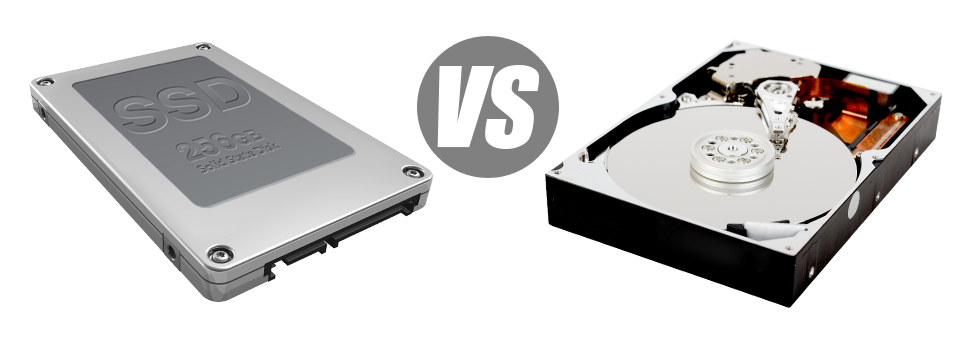If you have a website or maybe an application, speed is critical. The swifter your website functions and then the quicker your web applications function, the better for everyone. Since a web site is only a number of data files that connect with one another, the devices that store and work with these files play a huge role in website functionality.
Hard disks, or HDDs, have been, right until the past few years, the most trusted products for saving information. Nevertheless, lately solid–state drives, or SSDs, have been gaining interest. Look into our comparability chart to view if HDDs or SSDs are more suitable for you.
1. Access Time
Because of a radical new solution to disk drive performance, SSD drives enable for noticeably faster file access rates. Having an SSD, file access times are far lower (as little as 0.1 millisecond).
The concept powering HDD drives dates back to 1954. And even while it’s been noticeably processed as time passes, it’s even now can’t stand up to the ground breaking technology behind SSD drives. Having today’s HDD drives, the best data access rate you can attain can vary between 5 and 8 milliseconds.
2. Random I/O Performance
As a result of exact same radical strategy that permits for better access times, also you can appreciate better I/O performance with SSD drives. They will perform two times as many operations during a specific time compared to an HDD drive.
An SSD can handle at the least 6000 IO’s per second.
Hard drives feature reduced data access rates due to the older file storage and accessibility technique they’re making use of. And they also illustrate considerably slower random I/O performance as compared with SSD drives.
Throughout Profesionelle’s lab tests, HDD drives addressed an average of 400 IO operations per second.
3. Reliability
SSD drives lack just about any rotating components, meaning there’s a lot less machinery within them. And the fewer physically moving components there are, the fewer the chances of failure will be.
The common rate of failure of an SSD drive is 0.5%.
To have an HDD drive to work, it must spin a pair of metal hard disks at over 7200 rpm, keeping them magnetically stable in the air. They have a massive amount moving parts, motors, magnets along with other gadgets jammed in a small place. So it’s no surprise the standard rate of failure of any HDD drive can vary between 2% and 5%.
4. Energy Conservation
SSD drives are usually smaller than HDD drives and also they lack any moving elements at all. Because of this they don’t produce so much heat and require a lot less power to work and fewer energy for cooling down reasons.
SSDs take in amongst 2 and 5 watts.
From the moment they have been created, HDDs have been really electric power–greedy devices. Then when you have a hosting server with quite a few HDD drives, this will add to the month to month power bill.
On average, HDDs consume between 6 and 15 watts.
5. CPU Power
The faster the data accessibility speed is, the swifter the file queries are going to be delt with. As a result the CPU will not have to save assets waiting for the SSD to reply back.
The normal I/O delay for SSD drives is only 1%.
When compared with SSDs, HDDs enable reduced data accessibility speeds. The CPU must wait for the HDD to return the demanded data file, scheduling its resources for the time being.
The regular I/O delay for HDD drives is around 7%.
6.Input/Output Request Times
In the real world, SSDs function as perfectly as they performed during our lab tests. We competed an entire system back–up on one of the production servers. Throughout the backup process, the regular service time for any I/O demands was in fact under 20 ms.
During the same trials with the exact same hosting server, now installed out using HDDs, general performance was substantially reduced. During the hosting server data backup process, the normal service time for any I/O demands varied somewhere between 400 and 500 ms.
7. Backup Rates
Referring to back–ups and SSDs – we’ve noticed a substantual development with the data backup rate as we switched to SSDs. Right now, a standard server back–up takes merely 6 hours.
We utilized HDDs exclusively for several years and we have got very good familiarity with precisely how an HDD functions. Backing up a hosting server furnished with HDD drives is going to take about 20 to 24 hours.
With Profesionelle, you will get SSD–equipped web hosting services at the best prices. Our web hosting plans plus the VPS servers can include SSD drives automatically. Go in for an web hosting account with Profesionelle and witness how your web sites can become much better automatically.
Hepsia
- Live Demo
Service guarantees
- All of our Virtual Private Servers provide no setup costs and function in a stable network delivering 99.9% of uptime. Full root server access privileges warranted.
Compare our prices
- Effortlessly compare the allocations and tools provided by our Virtual Private Servers. Find out which VPS Hosting configuration will give you just what you want to manage your multi–media web presence effortlessly.
- Compare our hosting plans
Contact Us
- Contact us 24 hours by email or by utilizing our super–fast ticketing platform. Our techs are ready to answer any queries within 60 minutes.














